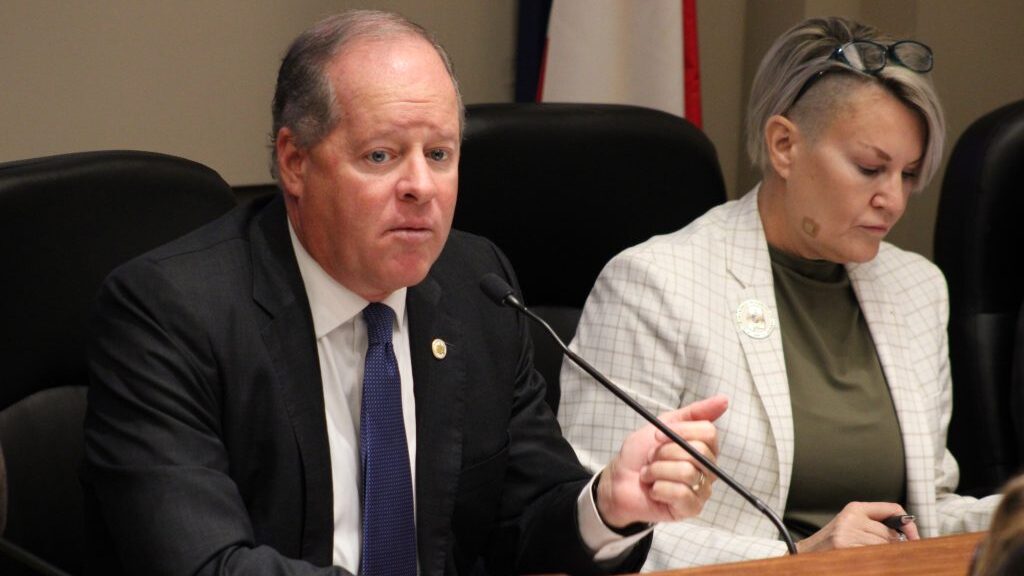Several Alabama state agencies are working different efforts and initiatives to keep people from returning to prison after they’re released.
Under the state’s Reentry Alabama 2030 initiative, state leaders want to half the current rate of 29% in six years.
“Alabama is ranked 25th in the country on recidivism; our goal is to cut that recidivism in half by the end of this decade,” Cam Ward, director of the Alabama Bureau of Pardons and Paroles, told the Reentry Alabama Study Commission on Tuesday (Aug. 27).
“Should we cut it in half, that would make us in the top five states in the country, and I think that’s a goal that we can make.”
Recidivism is measured by the number of people who commit new crimes within three years of their release from prison.
Initiatives
The Alabama Law Enforcement Agency is currently in the process of implementing a pilot program at one of the state’s correctional facilities to issue every Alabamian leaving prison an ID. That was mandated in a 2021 law that the state has struggled to meet.
Sam Adams, governmental affairs director for ALEA and member of the study commission, also shared that his agency is working to expand the program to all correctional facilities in the state.
David Walters with the Alabama Community College System, another member of the board, championed a number of initiatives his agency had partnered on, including its partnership with Ingram State Technical College at the PREP Center at Staton Correctional Facility that equips inmates with in-demand job skills.
Walters also shared developments on new initiatives his agency was currently in the process of implementing.
“We’re just rolling out a new program with (the Alabama Department of Human Resources) where we’re going to be able to incentivize employers to actually hire individuals that are formerly incarcerated into good jobs, so we’ll be subsidizing that,” Walters said.
Jeff Williams, representing the Alabama Department of Corrections, said that his own agency was issuing to inmates leaving the prison system Social Security cards “nearly at 100%.” ADOC was also in the process, he said, of rolling out another initiative to procure documents for outgoing inmates.
“We’ve entered into an (memorandum of understanding) with the Department of Public Health, so we’re in the final stages of completing that so that we can also provide those birth certificates as well,” Williams said.
Labor
The Alabama Department of Labor, led by Secretary Fitzgerald Washington, had perhaps the largest role to play in Alabama Reentry 2030, Ward said, with Washington touting the early success of its partnerships to help train inmates for the workforce.
Washington also noted that the goal of cutting the state’s recidivism rate in half also aligned well with Gov. Kay Ivey’s and state leaders’ goal of improving the state’s labor participation rate, which at 57.5%, is among the lowest in the country, well below the national rate of 62%.
Given state leadership’s goal of increasing labor participation and the study commission’s goal to connect Alabamians leaving the criminal justice system with stable employment, Ward noted the outsized role Washington’s agency could play in cutting recidivism in half.
“We’ve seen that a lot at the PREP Center where these people get a good, meaningful job and the criminal justice system doesn’t see them again,” Ward said.
Reentry 2030
Alabama’s efforts to cut recidivism are part of the national initiative known as Reentry 2030, launched by the Council of State Governments Justice Center in 2022, with Alabama being the second state to join the effort. As of August, five states have joined the initiative.
Two Justice Center representatives participated in the study commission’s meeting. Nicole Jarrett shared with the commission what her team had heard as the most-frequently cited hurdle for those leaving the criminal justice system.
“They face significant challenges to safe and stable housing, and we know without that, all the best reentry plans fall apart if people don’t have safe housing,” Jarrett said. “It’s the number one reentry challenge that people name.”
Jarrett told the commission that her team had already completed site visits and evaluations, and by October, would be able to begin the recommendation process to help develop an action plan for the state to cut its recidivism rate.
While a lofty goal, Ward closed out the meeting with an optimistic outlook to the state’s ability to cut recidivism in half.
“It’s ambitious, but I think with the united, bi-partisan support we’ve had over the years on this, I think we can really make a dent (to make a) better, safer society for those who are post-incarceration,” Ward said.
‘Road map forward’
Ward reiterated his confidence in the state’s ability to meet that goal by 2030 after the meeting to Alabama Daily News, pointing to past successes as a “road map forward.”
“So far in the last two-and-a-half years at Perry County, that PREP Center, the number of people that have graduated and returned to custody is zero,” he told ADN.
“They’ve been put in job placement, so it’s been great. Our Day Reporting centers, they’re non-residential, (but) their recidivism rate is still below 10%, so we have a model, but it’s going to take all of us working together to make it happen.”
EDITOR’S NOTE — This story was written by Alexander Willis and originally published by Alabama Daily News. It is reprinted with permission.





Share with others: